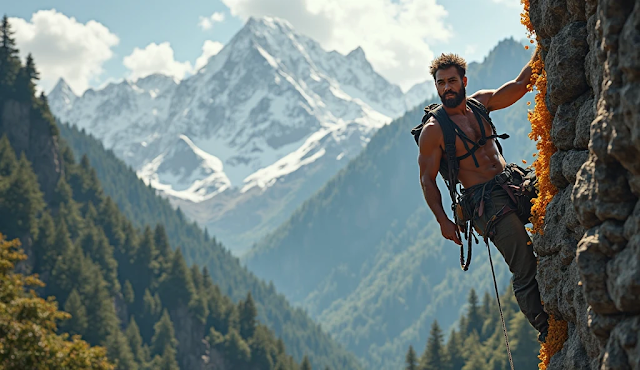Introduction
Nestled in the rugged landscapes of Nepal’s Mustang district, Muktinath Temple stands as a beacon of spiritual harmony, revered by Hindus and Buddhists alike. Known as Muktikshetra (the “Place of Liberation”) to Hindus and Chumig Gyatsa (“Hundred Waters”) to Buddhists, this sacred site embodies the unity of two ancient faiths. With its 108 water spouts symbolizing purification and liberation, Muktinath is more than a pilgrimage—it’s a journey of the soul. In this comprehensive guide, we explore its spiritual significance, cultural richness, and practical travel insights to help you plan a transformative visit.
1. The Spiritual Significance of Muktinath
A Confluence of Faiths
Muktinath Temple is a rare example of religious syncretism, where Hinduism and Buddhism coexist seamlessly. For Hindus, it’s one of the 108 Divya Desams (sacred Vishnu shrines) and a gateway to moksha (liberation from the cycle of rebirth). Buddhists revere it as a site blessed by Guru Rinpoche (Padmasambhava), the founder of Tibetan Buddhism, and home to dakini goddesses.
Hindu Beliefs: Muktikshetra
According to Hindu mythology, Lord Vishnu meditated here to absolve himself of a curse, granting the site its liberating power. Devotees believe bathing in the temple’s holy waters washes away lifetimes of sins, while offering prayers here ensures salvation. The temple’s eternal flame, fueled by natural gas, symbolizes the divine presence of Vishnu and Brahma.
Buddhist Beliefs: Chumig Gyatsa
Buddhists associate Muktinath with the Dakinis (sky dancers) and Guru Rinpoche, who meditated here en route to Tibet. The 108 water spouts mirror the 108 Buddhist stupas at Lo Manthang, representing the 108 human passions to overcome. Pilgrims circumambulate the temple, spin prayer wheels, and chant mantras to honor its sanctity.
2. The 108 Sacred Waters: Rituals of Purification
Symbolism of the 108 Spouts
The number 108 holds deep spiritual meaning in both Hinduism and Buddhism:
Hinduism: 108 is the number of Vishnu’s names, beads in a mala (prayer necklace), and Upanishads.
Buddhism: 108 represents the mental afflictions to transcend on the path to enlightenment.
The Cleansing Ritual
Pilgrims brave the icy waters of the 108 spouts, arranged in a semicircle behind the temple. Each spout is carved in the shape of a bull’s head, channeling water from the Gandaki River. Bathing here is believed to purify karma, heal ailments, and grant spiritual renewal.
Practical Tips for Pilgrims
Carry a change of clothes and towels.
Visit early morning to avoid crowds.
Respect local customs: Walk clockwise around the spouts and temple.
3. Exploring Muktinath Temple Complex
Main Temple Architecture
The pagoda-style temple houses a gold-plated idol of Lord Vishnu, flanked by goddesses Lakshmi and Saraswati. The inner sanctum’s Jwala Mai Temple features the eternal flame, burning atop a natural gas vent.
Surrounding Shrines
Murti Devi Temple: Dedicated to Vishnu’s consort.
Buddhist Gompa: Adjacent monastery with prayer flags and murals of Guru Rinpoche.
Jwala Mai Pond: A sacred pool fed by the Gandaki River.
4. How to Reach Muktinath: Travel Routes
By Air
Kathmandu to Pokhara: 25-minute flight, followed by a scenic drive to Jomsom (20-minute flight). From Jomsom, hire a jeep (1.5 hours) or trek (6–7 hours) to Muktinath.
By Road
Kathmandu to Muktinath (500 km): A 2-day journey via Pokhara and Tatopani, passing Kali Gandaki Gorge.
Pokhara to Muktinath (200 km): 10–12 hours by jeep through Beni and Marpha.
Trekking Routes
Annapurna Circuit: A 12–14 day trek from Besisahar, crossing Thorong La Pass (5,416m).
Jomsom Trek: Shorter 5–7 day route from Pokhara.
Permits Required
Annapurna Conservation Area Permit (ACAP): ~USD 30.
TIMS Card: ~USD 20.
5. Best Time to Visit Muktinath
Spring (March–May): Mild weather, blooming rhododendrons.
Autumn (September–November): Clear skies, ideal for trekking.
Avoid Monsoon (June–August): Landslides and flight cancellations.
Winter (December–February): Extreme cold; roads may close.
6. Nearby Attractions
Kagbeni Village
A medieval village on the Kali Gandaki River, known for its red monasteries and apple orchards.
Upper Mustang
A restricted region resembling Tibetan plateaus, with caves and the ancient kingdom of Lo Manthang.
Thorong La Pass
A challenging trekking route offering panoramic Himalayan views.
7. Travel Tips for a Fulfilling Pilgrimage
Altitude Acclimatization: Muktinath sits at 3,710m. Spend a day in Jomsom to adjust.
Pack Wisely: Warm layers, sturdy shoes, sunscreen, and reusable water bottles.
Respect Local Culture: Dress modestly, avoid leather in temple areas, and seek permission before photographing rituals.
8. Frequently Asked Questions (FAQs)
Q: Is Muktinath accessible to non-pilgrims?
A: Yes! Adventure seekers and culture enthusiasts are welcome.
Q: Are there accommodations near Muktinath?
A: Basic guesthouses in Ranipauwa village; luxury stays in Jomsom.
Q: Can Hindus and Buddhists worship together here?
A: Absolutely—the temple celebrates unity through shared rituals.
Conclusion
Muktinath Temple transcends religious boundaries, offering a sanctuary where seekers of all faiths find solace. Whether you’re drawn by the promise of liberation, the allure of Himalayan treks, or the cultural tapestry of Nepal, Muktinath promises an unforgettable journey. Plan your pilgrimage with reverence, preparation, and an open heart—the mountains and the divine await.
Discover Muktinath Temple, Nepal’s sacred site for Hindus and Buddhists. Learn about its 108 holy waters, spiritual rituals, trekking routes, and travel tips for a soul-stirring pilgrimage.
Muktinath Temple, Muktikshetra, Chumig Gyatsa, Nepal pilgrimage, 108 holy waters, Hindu Buddhist unity, Annapurna Circuit, Mustang travel guide.
By blending spirituality, culture, and adventure, this guide ensures your visit to Muktinath becomes a transformative chapter in your travel story. 🌄🕉️🙏

.png)
.png)
.png)

.png)



0 Comments